Why get a good amp if you play metal?
Every metal guitarist knows that producing sound that will reach out into an audience and drive the music forward requires extreme sound quality and volume. In fact, the vast majority of cheap, poorly built amps can’t actually create the distortion and tone gain needed to produce a distinctive metal sound. The best guitar amp for metal needs to be capable of boosting distortion without losing sound quality.
What does all that mean for you? The short answer is that it’s well worth spending a bit of extra money on your guitar amp if you’re using it to play metal. Still, you’ll have a lot of options and choices to make, so you need to think about how you plan to use your amplifier and what type of metal sound you want to create.
Benefits and drawbacks of solid and tube amps for metal
 One of the biggest differences between amplifiers for metal is whether they use solid-state electronics or a tube amplifier to amplify your sound.
One of the biggest differences between amplifiers for metal is whether they use solid-state electronics or a tube amplifier to amplify your sound.
Tube amps are the classic guitar amplifier for metal. These amps use vacuum tubes to amplify your guitar’s sound, and these tubes allow you to create a high-distortion sound that many guitarists believe is unique to tube amplifiers. Tube amps are also louder than solid-state amplifiers for the same power input. The main downside to these amps is that they are expensive. In addition, tube amps can be somewhat finicky, so you might want to have a backup amp if you’re playing big gigs with some frequency.
Solid-state amplifiers rely on transistors and diodes to amplify the sound from your guitar with fidelity. The main advantages of these amplifiers are that they tend to be less expensive and more reliable than tube amps for metal. Solid amps aren’t as good as tube amps for making extremely distorted sounds, but if your metal music involves a cleaner sound profile than a solid amp can be an excellent choice.
You can also choose a hybrid amplifier, like the
VOX amp, which use tubes in the preamp section and solid-state electronics for the power drive. These amps are typically middle-of-the-road in price, but they are also intermediate in reliability.
Configuration: combo or amp head?
Another major decision you’ll need to make is whether you want an all-in-one combo amp or an amp head, which requires a separate speaker. Metal guitarists have chosen amp heads – like the Marshall, Orange, PRS, and Peavey heads – rather than combo amps for many years. That’s because combo amps simply haven’t offered enough power to use for gigs in the past, so combo amps were always limited to practices and home use.
 Amp heads still offer an impressive amount of amplification power for their size, but combo amps have begun to catch up. The Fender amp in particular is available in a 200-watt model, which can compete with any of the amp heads we produced. Still, keep in mind that all that power in a combo amp makes for a very large and heavy unit. So, whether an amp head or a combo amp is better for you also comes down to how you plan to use the amp, and whether you need to travel with it.
Amp heads still offer an impressive amount of amplification power for their size, but combo amps have begun to catch up. The Fender amp in particular is available in a 200-watt model, which can compete with any of the amp heads we produced. Still, keep in mind that all that power in a combo amp makes for a very large and heavy unit. So, whether an amp head or a combo amp is better for you also comes down to how you plan to use the amp, and whether you need to travel with it.
How powerful you need your amp to be?
When it comes to guitar amplifiers for metal, power is a tricky question. Having more power available in your amp means that you can play at higher output volumes without oversaturating the tubes and electronics, at which point distortion kicks in. While distorted sound is a staple of metal music, many guitarists also need the option to play clean sounds.
So, whether you need more or less power depends on the type of sounds you need to make and the volumes that you plan to play at. If you prefer to get your distortion from pedals rather than your amp, you may need 100 watts of power or more – like the Marshall and Peavey amp heads provide. On the other hand, if you want to get as much distortion as possible out of your amplifier, an amp head like the model from Orange may be a better option. 40- to 50-watt combo amps like the models from Fender, VOX, and Marshall represent a good compromise for distortion at higher volumes.
One other thing to keep in mind is that some amps, like the
Orange amp head, offer switchable powers. This can be extremely important if you are getting distortion from your amp, since you can easily alter the amount of distortion you create at any given volume.
Controls
 The controls on most amplifiers are similar – you can change the tone, gain, reverb, and often the bass and treble settings. However, some amps for metal go above and beyond when it comes to offering control knobs so you can take full ownership over your sound. Our Editor’s Choice, the Peavey amp head, takes controls to the next level by offering numerous controls for the clean portion of your sound, the distorted portion of your sound, and the frequency filter gate. More controls can be replaced by pedals after market, but having more control is generally better for metal guitarists.
The controls on most amplifiers are similar – you can change the tone, gain, reverb, and often the bass and treble settings. However, some amps for metal go above and beyond when it comes to offering control knobs so you can take full ownership over your sound. Our Editor’s Choice, the Peavey amp head, takes controls to the next level by offering numerous controls for the clean portion of your sound, the distorted portion of your sound, and the frequency filter gate. More controls can be replaced by pedals after market, but having more control is generally better for metal guitarists.
Included effects and presets
Most guitar amps for metal allow you to connect your amp to an effects loop so you can create an endless variety of sounds. But some amps, like the VOX combo amp, come with a handful of presets and effects so you can get started playing around with your sound immediately. Having onboard presets and effects is especially helpful if you don’t have an effects panel to connect your amp to.
Extra features
Some modern amps like those from Fender come with onboard Bluetooth and WiFi so you can connect to a program on your computer or smartphone. That makes it easy to add presets and keep your amp running smoothly. However, keep in mind that metal guitarists have gotten by without WiFi on their amps for decades, so these extras are truly extra.
Dimensions and weight
Guitar amps, and especially combo amps, can be extremely heavy. That may not be a problem if you only use your amp at home, but keep size and weight in mind when choosing an amp if you frequently travel to gigs. This can also affect your decision about whether to go with a combo amp or amp head.
Warranty
Warranties on guitar amps for metal aren’t extremely common, but they’re worth looking for. Fender, for example, offers a two-year warranty on the company’s Mustang GT 40 combo amp. Having a warranty can protect your investment in an amp in case anything is wrong – which can be especially important for tube amps.











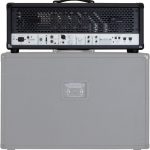




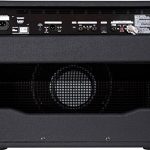










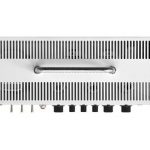

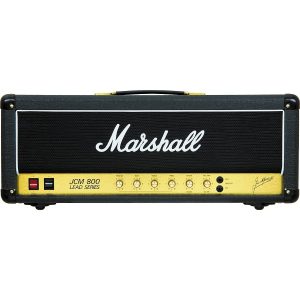





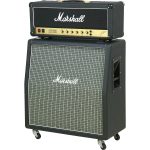
























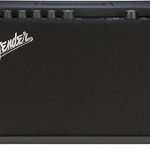



 One of the biggest differences between amplifiers for metal is whether they use solid-state electronics or a tube amplifier to amplify your sound.
One of the biggest differences between amplifiers for metal is whether they use solid-state electronics or a tube amplifier to amplify your sound. Amp heads still offer an impressive amount of amplification power for their size, but combo amps have begun to catch up. The
Amp heads still offer an impressive amount of amplification power for their size, but combo amps have begun to catch up. The  The controls on most amplifiers are similar – you can change the tone, gain, reverb, and often the bass and treble settings. However, some amps for metal go above and beyond when it comes to offering control knobs so you can take full ownership over your sound. Our Editor’s Choice, the
The controls on most amplifiers are similar – you can change the tone, gain, reverb, and often the bass and treble settings. However, some amps for metal go above and beyond when it comes to offering control knobs so you can take full ownership over your sound. Our Editor’s Choice, the 










The Marshall dsl40c is NOT a solid state amp!
Hello there! Thank you for your comment. You are absolutely correct, the Marshall DSL40C is indeed a tube amplifier, not a solid-state amp. It features two EL34 power tubes and three ECC83 preamp tubes, giving it that classic Marshall tube tone. It’s a fantastic amp for those seeking that warm, rich, and dynamic sound. If you have any more questions or need further clarification, feel free to ask. Rock on!
Were you able to review the Mesa Triple Crown 100? Curious as to what you’re thoughts are on the Peavey Invective compared to the Mesa Triple Crown
All Marshall DSL’s are all tube amps yet you’ve awarded it best solid state. Just though you might like to know.
Thank you for bringing this to our attention. We apologize for the confusion in our award designation. The Marshall DSL series is indeed an all-tube amplifier, and we appreciate you pointing out the error. We will make the necessary corrections to accurately reflect its classification. Your feedback is invaluable in ensuring the accuracy of our content. Thank you again, and please feel free to reach out if you have any further questions or concerns.
DSL40 is not solid state it is a tube/valve amp !